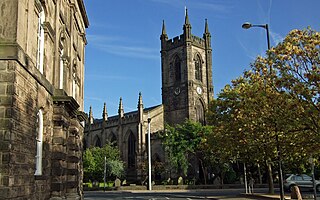
Staffordshire is a landlocked ceremonial county in the West Midlands of England. It borders Cheshire to the northwest, Derbyshire to the east, Warwickshire to the southeast, the West Midlands county and Worcestershire to the south, as well as Shropshire to the west. The largest settlement is the city of Stoke-on-Trent; the county town is Stafford.

Stoke-upon-Trent, also called Stoke, is one of the six towns that along with Hanley, Burslem, Fenton, Longton and Tunstall form the city of Stoke-on-Trent, in Staffordshire, England.
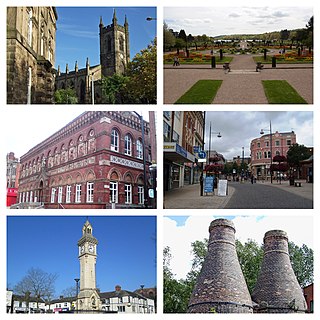
Stoke-on-Trent is a city and unitary authority area in Staffordshire, England, with an area of 36 square miles (93 km2). In 2019, the city had an estimated population of 256,375. It is the largest settlement in Staffordshire and is surrounded by the towns of Newcastle-under-Lyme, Alsager, Kidsgrove and Biddulph, which form a conurbation around the city.

Hanley is one of the six towns that, along with Burslem, Longton, Fenton, Tunstall and Stoke-upon-Trent, amalgamated to form the City of Stoke-on-Trent in Staffordshire, England.

Fenton is one of the six towns that amalgamated with Hanley, Tunstall, Burslem, Longton and Stoke-upon-Trent to form the county borough of Stoke-on-Trent in 1910, later raised to city status in 1925. Fenton is often referred to as "the Forgotten Town", because it was omitted by local author, Arnold Bennett, from many of his works based in the area, including one of his most famous novels, Anna of the Five Towns. It is in the ceremonial county of Staffordshire, England

Burslem is one of the six towns that along with Hanley, Tunstall, Fenton, Longton and Stoke-upon-Trent form part of the city of Stoke-on-Trent in Staffordshire, England. It is often referred to as the "mother town" of Stoke on Trent.

Longton is one of the six towns which amalgamated to form the county borough of Stoke-on-Trent in 1910, along with Hanley, Tunstall, Fenton, Burslem and Stoke-upon-Trent. It is in the ceremonial county of Staffordshire, England

The Regent Theatre is a theatre in Stoke-on-Trent, England. Constructed in 1929 as a cinema, it is one of several theatres in the city centre and one of two operated by the Ambassador Theatre Group on behalf of Stoke-on-Trent City Council. The building was converted for full-time use as a theatre in 1999, and since then has hosted a number of shows and musicals. The theatre is also the northern base for the Glyndebourne Touring Opera.
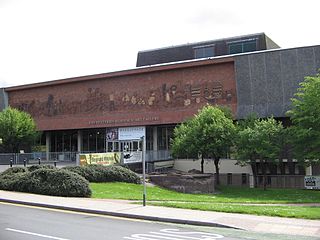
The Potteries Museum & Art Gallery is in Bethesda Street, Hanley, one of the six towns of Stoke-on-Trent in Staffordshire. Admission is free.
Basford is a suburb which sits on high ground between Newcastle-under-Lyme and Stoke-on-Trent in Staffordshire, England.
The federation of Stoke-on-Trent was the 1910 amalgamation of the six Staffordshire Potteries towns of Burslem, Tunstall, Stoke-upon-Trent, Hanley, Fenton and Longton into the single county borough of Stoke-on-Trent. An anomaly in the history of English local government, this was the first union of its type and the only such event to take place until the 1960s. The 1910 federation was the culmination of a process of urban growth and municipal change that started in the early 19th century.

Bethesda Methodist Chapel is a disused Methodist chapel, in Hanley, Staffordshire, England. One of the largest Nonconformist chapels outside London, the building has been known as the "Cathedral of the Potteries", being "one of the largest and most ornate Methodist town chapels surviving in the UK".
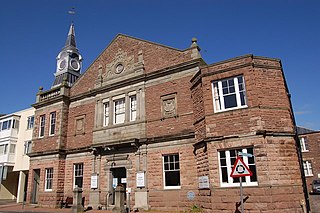
The Rolls Hall, Whitecross Street, Monmouth, Monmouthshire is a Victorian hall, now public library, donated to the town in celebration of Queen Victoria's Golden Jubilee by John Rolls, the future Lord Llangattock. It is a Grade II listed building as of 8 October 2005, and is one of 24 buildings on the Monmouth Heritage Trail.
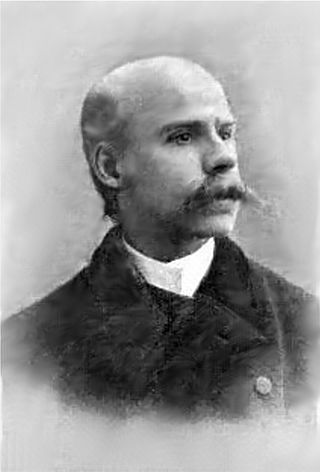
Charles Swinnerton Heap was an English organist, pianist, composer and conductor.
The Theatre Royal, Hanley was a theatre in Stoke-on-Trent, England with a long history.
Hanley High School founded in 1894 was originally a co-educational grammar school based in the centre of Stoke on Trent. In 1938, the girls moved to Thistley Hough High School for Girls, and, due to subsidence making the school buildings unsafe, the boys' school moved to new premises in Bucknall in 1953.

Stoke-on-Trent Town Hall is a municipal building in Glebe Street, Stoke-on-Trent, Staffordshire, England. The town hall, which is the meeting place of Stoke-on-Trent City Council, is a Grade II listed building.
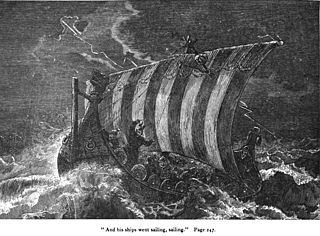
King Olaf is a cantata by British composer Edward Elgar scored for soloists, chorus and orchestra. It was commissioned for the North Staffordshire Music Festival of 1896, where it was well received. It went on to be performed by choral societies in other parts of the country.

Hanley Town Hall is a municipal building in Albion Square in Hanley, Staffordshire, England. The building, which is used as the local register office, is a Grade II listed building.











